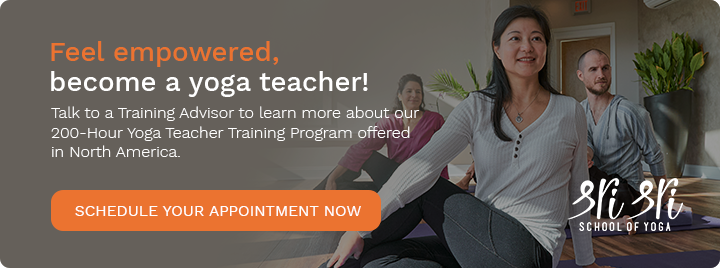Insomnia or difficulty falling asleep has become an epidemic. If you are also suffering from it, try this bedtime routine to fall asleep faster.
Insomnia epidemic
Insomnia is fast becoming a common chronic sleep disorder issue. According to the Centers for Disease Control and Prevention, sleep deprivation has officially become a public health problem. With around the clock access to technology and a culture that tends to prioritize work and “efficiency” over health and rest, more and more people around the globe are increasingly sleep-deprived.
Lack of sleep, besides leading to crankiness, grumpiness, tiredness, fatigue, can cause or contribute to an array of chronic diseases, including hypertension, diabetes, depression, obesity, cancer, and increased mortality. Even reduced productivity and inability to think clearly results from sleep loss.
Sufficient quality sleep is a must
When we sleep, our body repairs on a cellular level, tissues grow and repair, energy is restored, and our brain receives deep rest. We all know that we should be getting between 6-8 hours of sleep per night. Not just the number of hours of sleep, but sleep quality is also equally important.
But between work, school, family, and keeping up with the swirl of technology and communication vying for our attention, sleeping 6-8 hours is easier said than done. Our evening routines have changed in recent years. It used to be that we left work, maybe watched an hour of TV or spent time with family, then went to bed with a good book. But now we are replying to emails at any hour, scrolling on social media and letting just one more episode of that gripping crime or romantic drama automatically play on Netflix.
Technology and its advancements have made it easy for us to stay connected and get entertainment, but it’s having an adverse effect on our ability to get a good night’s sleep.
Pro Tip: Turn off your cell phone and stop looking at all screens at least one hour before bed. The blue light emitted from screens tricks the brain into thinking it’s still daytime, decreasing the secretion of the sleep hormone melatonin and preventing feelings of natural sleepiness.
Yoga for sleep: how it works
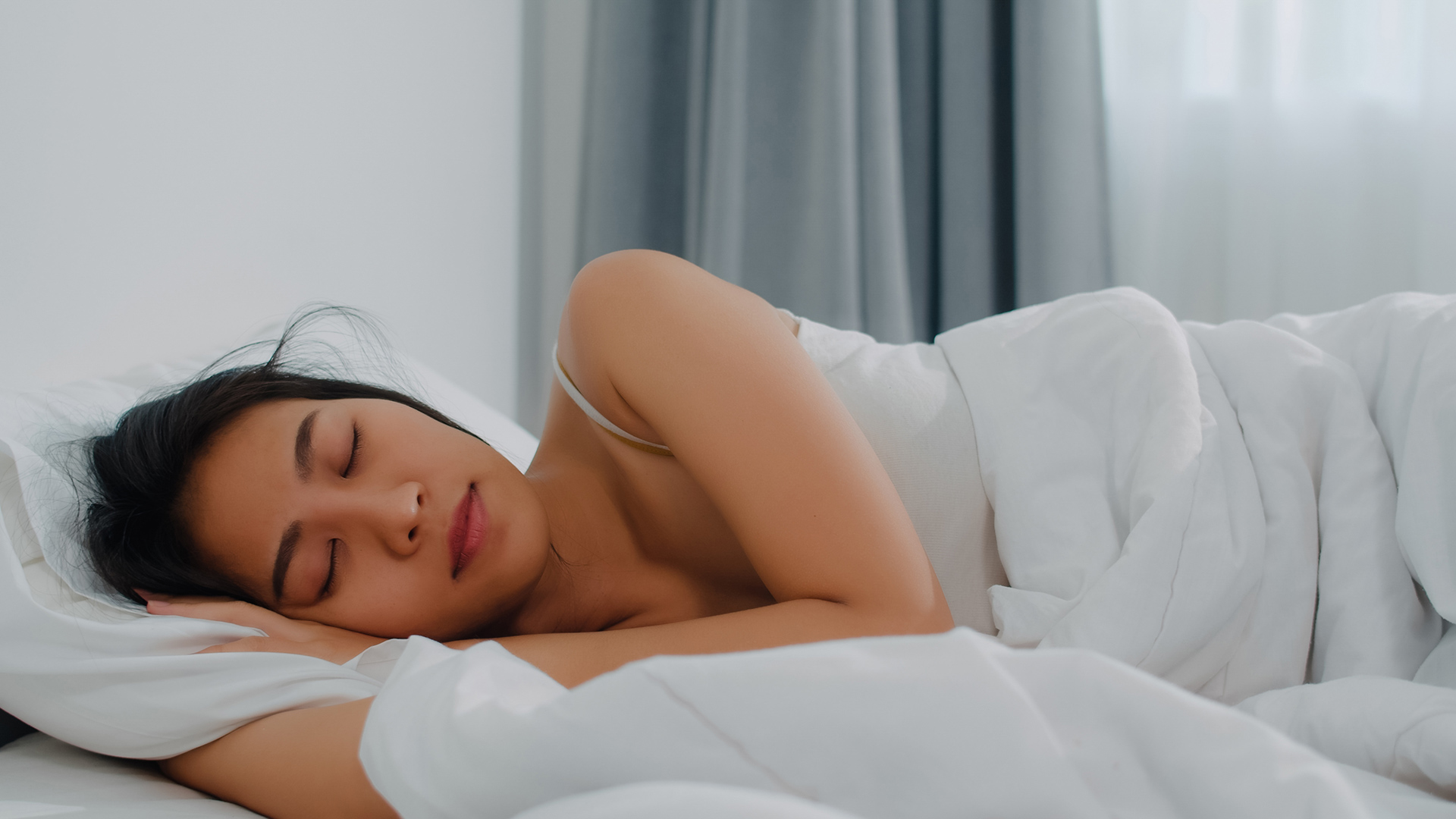
An unexpected email or a notification or those scary Netflix shows can trigger your stress response and release of stress hormones. They stimulate your sympathetic nervous system, and put you into ‘fight or flight’ mode, by accelerating your heart rate, increasing muscle tension and dilating your pupils to make you more responsive. So when you then lie down and close your eyes, your body and mind are not ready to rest, preventing you from getting the good-quality sleep you need.
So avoiding technological stressors and having digital detox at least 30-60-minute before bedtime is a good start. It can be really beneficial to use that time to do some gentle yoga instead, to wind your body down ready for sleep.
If getting adequate sleep is difficult for you and you want to learn how to fall asleep fast, yoga can help. Regular yoga practice is known to be a remedy for several ailments, including insomnia and abnormal sleeping habits. Yoga relieves stress and calms the central nervous system. This can help switch off ‘fight or flight mode’, stimulating instead your parasympathetic nervous system – the system that helps your body rest and digest. This allows the body to reach a restful state in preparation for sleep and help you sleep better.
A national survey found that over 55% of people who did yoga found that it helped them get better sleep. Over 85% said yoga helped reduce stress. Introducing a good bedtime routine can help you find calm before you snooze, allowing you to wake up feeling refreshed.
Yoga sequence for better sleep
One of the best ways to develop healthy sleeping patterns and better sleep quality is to establish a relaxing bedtime routine. Before bed, give the following five yoga postures a try. These poses help release any excess stress from the day and calm the mind, allowing for a night of deep, rejuvenating sleep and deep relaxation. You may do these poses in your bed itself or on the yoga mat.
You may choose to include normal deep breathing, or Ujjayi breathing in each pose to relieve tension and relax into a peaceful sleep. For Ujjayi breathing, inhale deeply through the nose. With your mouth closed, exhale through your nose while constricting the back of your throat as if you are saying “ha” but keep your mouth closed. This exhalation should sound like the waves of the ocean (or like Darth Vader from Star Wars). Use this slow and steady breath to soothe yourself in each of these poses.
1) Cat-cow stretch (Marjariasana)
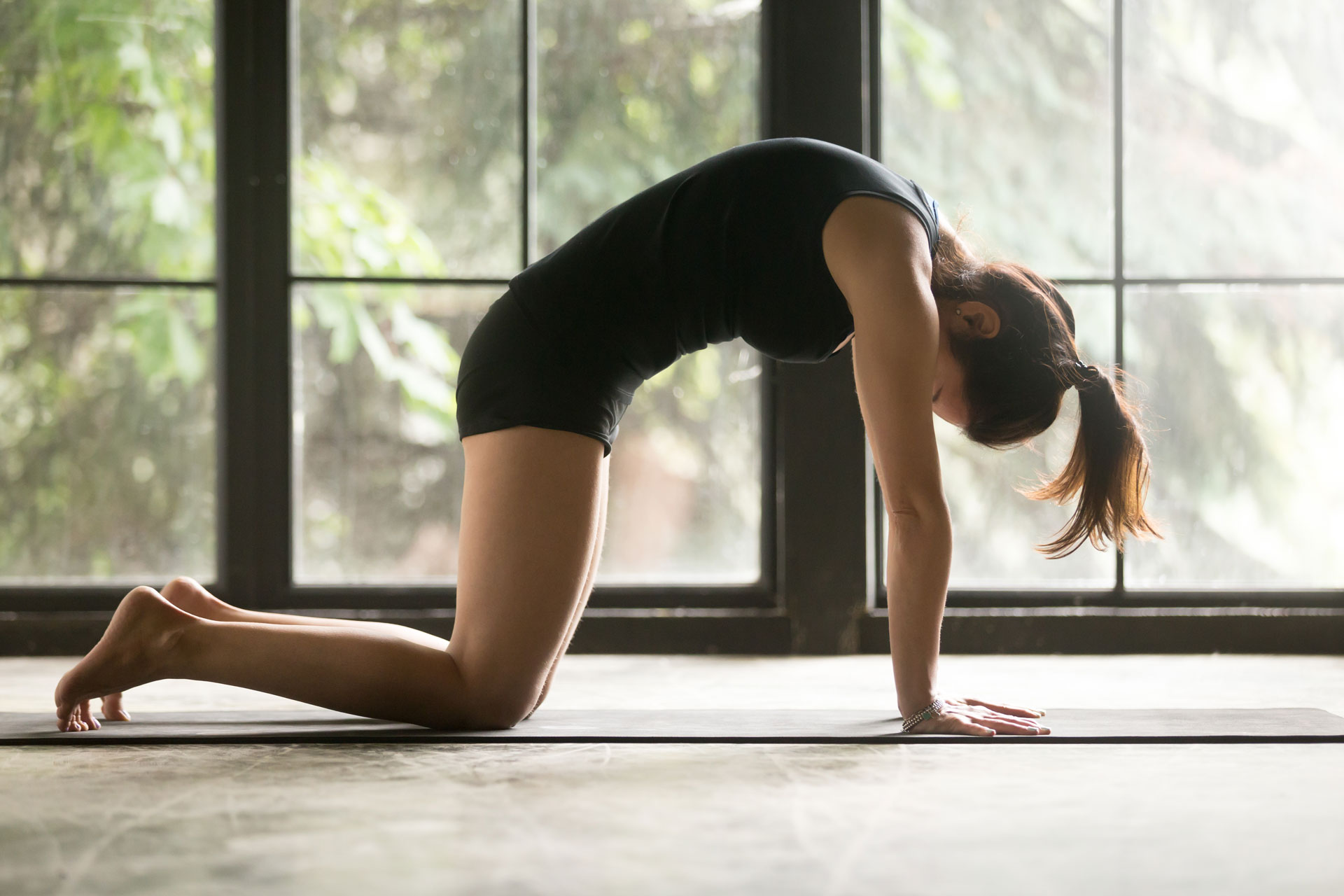
Cat-cow stretch is an excellent stretch for spine flexibility. This pose helps massage the digestive organs and improve digestion. The posture also improves blood circulation, and relaxes the mind.
Get on all fours with your hands directly below your shoulders and your knees directly below your hips. Distribute your weight equally between your hands and spread your fingers wide. Inhale and round your back, arching it up as you lower your chin to your chest; feel the stretch from your neck to your tailbone. As you exhale, lower your back down all the way to a scoop shape as you lift your head, and tilt it back. Repeat for 5-7 times with gentle even breathing.
2) Child pose (Shishuasana)
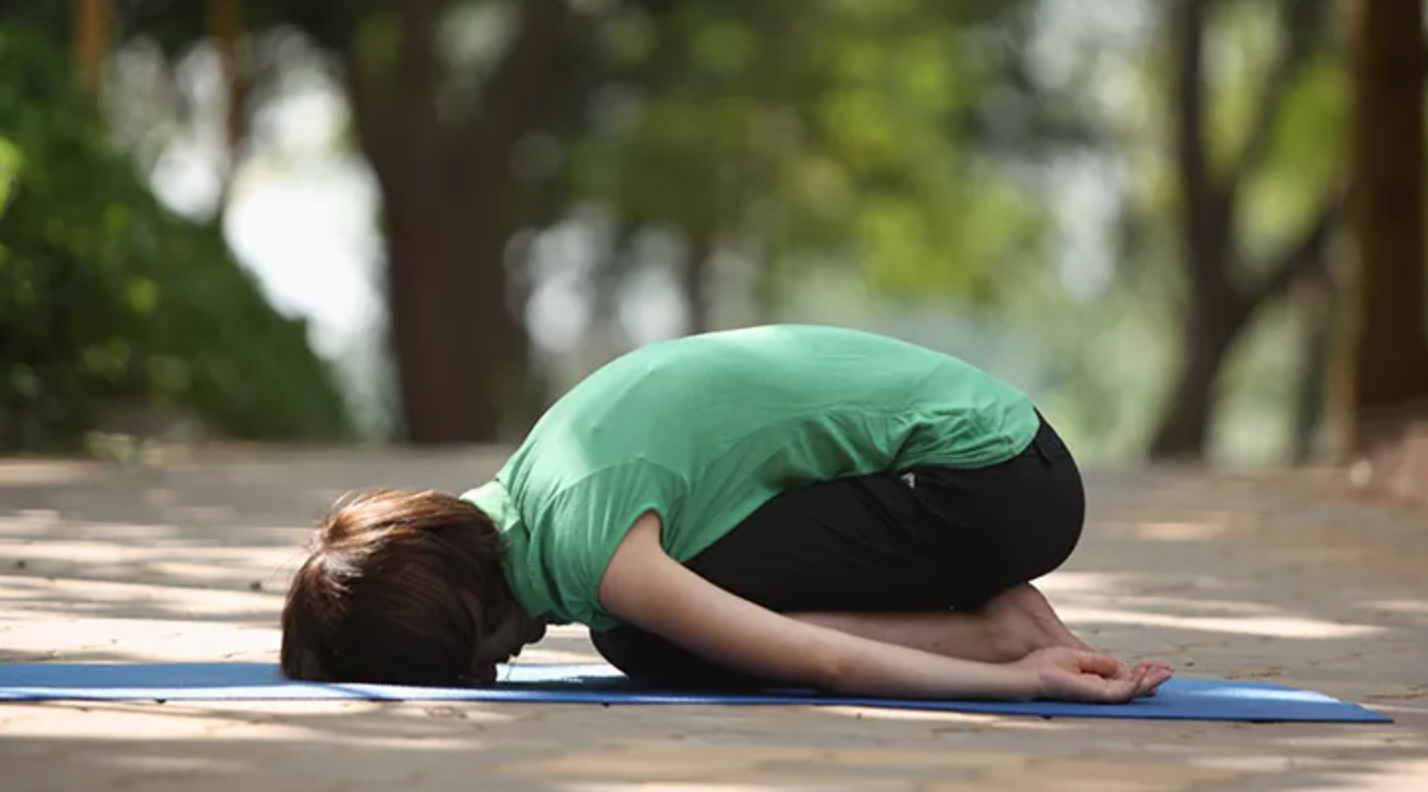
Child’s pose is a deeply relaxing stretch for the back and helps calm and soothe the nervous system.
For bedtime routine, supported child pose works wonders. Take a pillow (or a bolster) and sit at one end, with your thighs on either side and your sit bones against your heels.
Gently fold forward to come to rest on the pillow, with your head turned to one side, keeping your sit bones and heels together. Use a blanket or pillow between them as needed.
Relax into the pillow, letting it hold your weight and let go of any thoughts that are still bouncing around in your mind.
Stay here for 10-15 breaths, then you may repeat with your head facing the other way.
3) Butterfly pose (Baddha Konasana)
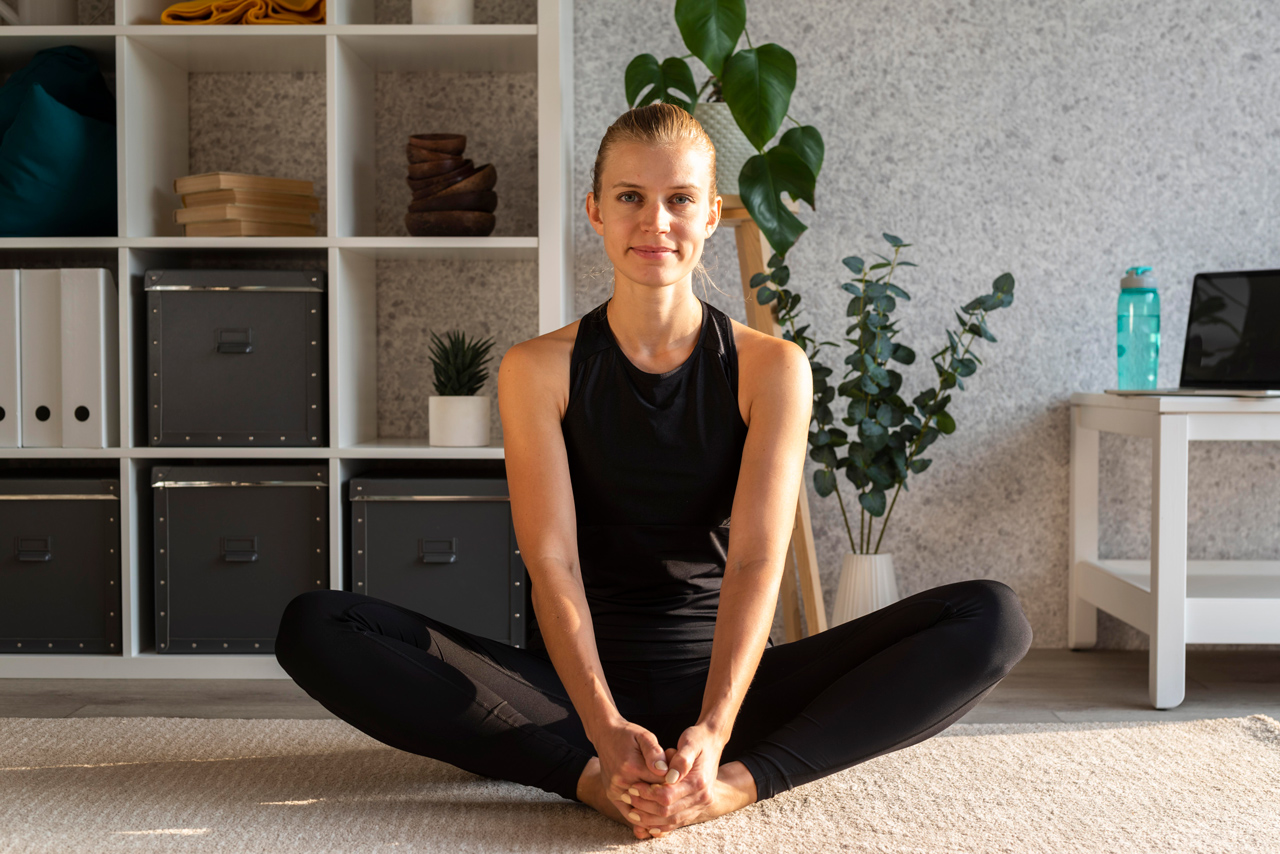
Butterfly pose removes fatigue from long hours of sitting or standing. This posture provides a stretch for hips, inner thighs, and knees.
Bring the soles of your feet together in front of you.
Your feet can be as near or as far away from your pelvis as feels good, and you may need to sit on a pillow to elevate your hips, or support your knees either side with pillows.
Inhale and stretch your spine upwards, then gently start to fold forwards, curving spine and neck to bring your forehead towards your feet.
Stop wherever feels as though you have found a good stretch, and stay for 10-15 breaths, breathing into your back.
Or you can do the reclined butterfly pose by starting by lying on your back and then bringing the soles of your feet together. Use props as needed to support your knees and back.
4) Happy baby pose (Anadabalasana)
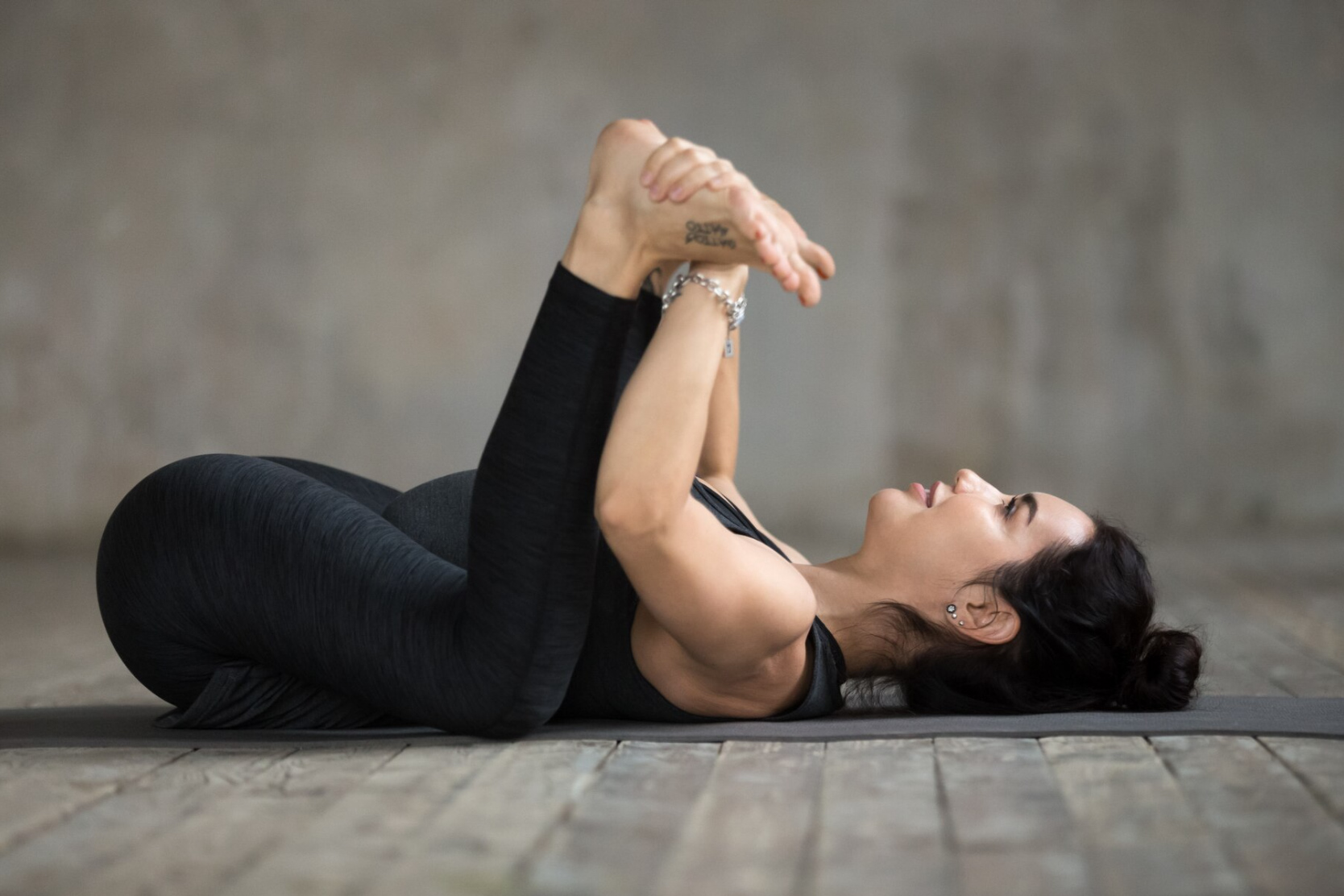
Happy baby is a lovely way to relieve tension in both the lower back and the mind.
Lying on your back, lifting and extending your legs up making sure that your back is nice and long. Fold your knees, bring them back into your chest and grab the outside of the sides of your feet.
Extend your legs a little and bring your knees wide. Push into your hands, feeling a nice stretch.
You can gently roll from side to side or forward and backward to give your lower back a little massage.
Have a little smile on your face like a happy baby – this will help you let go of any stress from your day that you are holding on to.
Hold for 10-15 breaths.
5) Legs-up-the-wall Pose (Viparita karani asana)
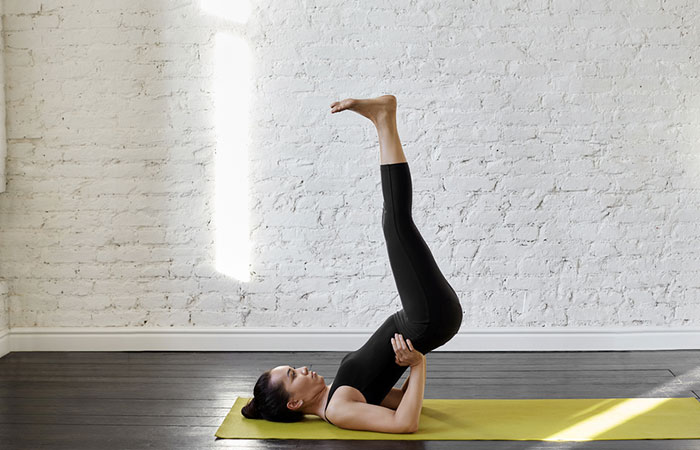
Legs-up-the-wall Pose relieves tired legs and feet, helps increase blood supply to the brain, relieves mild headache, and calms the mind.
Find an empty space on your wall and place your mat perpendicular to the wall.
Sit down on the mat and bring your left or right side to the wall as close as possible, so your side body meets the wall.
Lie back onto the mat, and gently place your legs up the wall. Relax your arms by your sides.
Optional: You can add a rolled up mat or firm cushion underneath your tailbone to give your tailbone added support. If you are doing this routine in your bed without the wall support, lying on your back, simply lift your legs up.
6) Reclined twist (Markat asana)
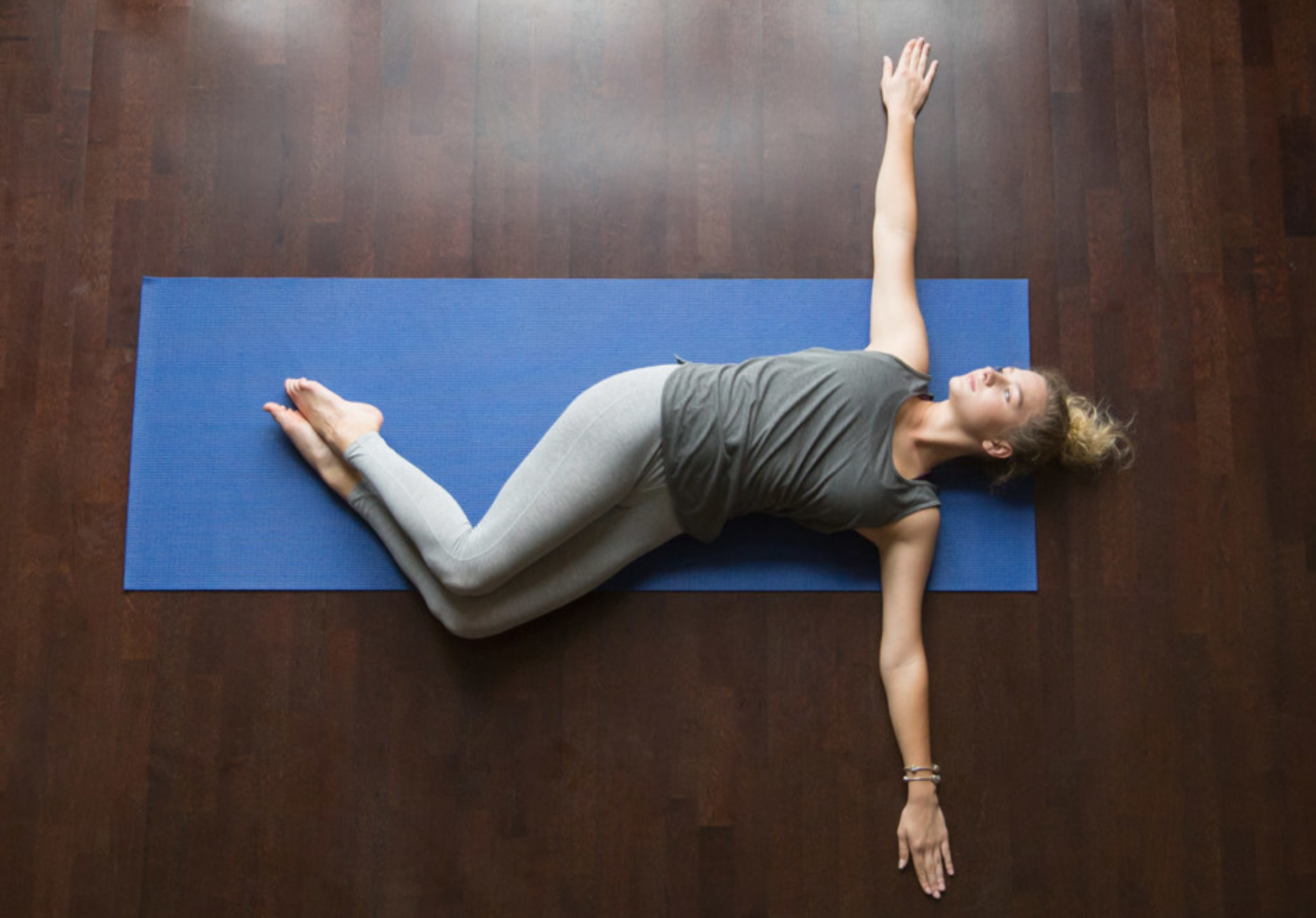
This is another great pose for your spine, twisting out any aches and pains that may have come from sitting at a desk or walking around.
It also provides a gentle massage for your internal digestive organs, which can help your dinner to go down before bed.
From Happy Baby or legs up position, bring your legs down and place your heels on the bed and your knees are pointing towards the ceiling.
With a gentle spinal twist, bring both your knees over to one side. Stay there for 10-15 seconds keeping your breath nice and even. Then switch sides.
7) Corpse Pose (Shavasana)
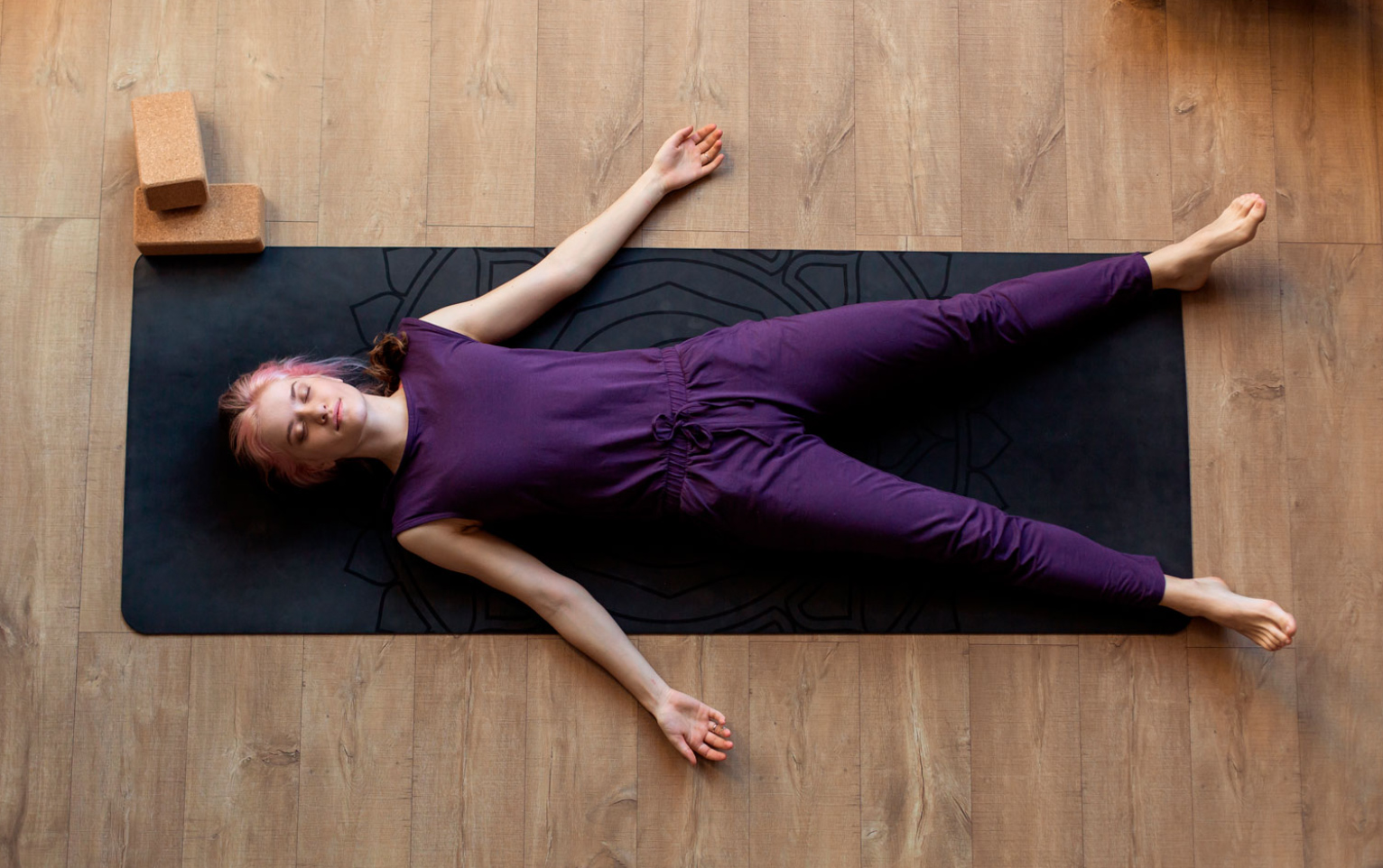
In addition to the above poses, relaxing in corpse pose with gentle body scanning – Yoga Nidra – may help relax the entire system in preparation for sleep. You may also include a guided sleep meditation with Jnana mudra or Chin mudra. This hand mudra gives a sense of grounding and relaxes the overstimulated thought patterns that keep you awake. With palms facing the ceiling, bring the tips of the index finger and thumb together, keep other fingers straight yet relaxed.
Other tips to help you sleep better
Sleep experts often point to the efficacy of creating a standard bedtime routine in order to signal your body that it’s time to prepare for sleep. Incorporating the above yoga routine either sometime during the day or right before bedtime along with following tips will find you sleeping well at night.
- Avoid watching a horror movie late at night. Instead, listen to soft instrumental music, chants or knowledge before getting ready to sleep.
- Avoid sleeping during the daytime, as doing so disrupts the biological clock. Ideally, meditating once first thing in the morning, and once in the afternoon for twenty minutes, and then sleeping at night for a minimum of eight hours is ideal.
- Finish eating dinner by 7 or 7.30 pm at the latest and wait at least two hours before falling asleep.
- Before sleep, reflect on your day. Feel content, pray, and go to sleep with a happy, relaxed mind.
- Make sure to sort out any disagreements with loved ones before falling asleep. Going to bed with unfinished business can lead to disturbed sleep.
- Avoid taking stimulants past 2 pm, especially if you suffer from insomnia.
- You may also want to learn a special breathing practice – SKY Breath Meditation that has helped thousands of people improve their sleep. Research finding also suggests an important role of SKY for insomnia and sleep disturbance.
Enjoy your Zazz…. ?, have a good rest and wake up refreshed every morning!
Interested in becoming a certified yoga teacher?
Feel empowered, become a yoga teacher!
Talk to a Training Advisor to learn more about our 200-Hour Yoga Teacher Training Program offered in North America. Schedule Your Appointment Now.


